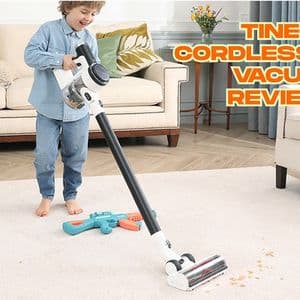Vacuum cleaners Dyson have long been associated with modern engineering and cutting-edge cleaning technology. From their sleek designs to their unique filtration systems, these appliances stand out in a crowded market. But what exactly makes them different? Let’s take a closer look.
How Dyson Technology Works
Dyson vacuums operate using cyclonic separation technology. This process spins dust and debris away from the airflow at high speed, ensuring minimal loss of suction. In many models, the filtration system captures microscopic particles, including allergens, making them suitable for allergy-prone households.
The motor design is also central to performance. Dyson’s digital motors are engineered for high efficiency and consistent power, even in cordless formats. This means users can clean for extended periods without performance drops.
Types of Dyson Vacuum Cleaners
Dyson offers several categories to suit different cleaning needs:
Upright Vacuums
Upright models are designed for deep cleaning large areas, especially carpeted floors. They often include adjustable heads to handle various surfaces.
Cordless Stick Vacuums
These lightweight models are known for portability and flexibility. They can easily transition between floor types and reach tight spaces without the restrictions of a cord.
Canister Vacuums
Featuring a separate canister connected to the cleaning head, these models provide strong suction with less weight in hand, making them easier to maneuver.
Handheld Vacuums
Compact and lightweight, handheld options are ideal for quick cleanups, furniture, or car interiors.
Key Features That Set Dyson Apart
What makes these vacuums different from traditional models?
-
Cyclonic Technology – Maintains suction for consistent cleaning results.
-
Advanced Filtration – Captures fine dust and allergens.
-
Lightweight Designs – Improves mobility and reduces cleaning fatigue.
-
Multiple Attachments – Adapts to a variety of cleaning tasks.
Choosing the Right Model
Selecting a Dyson vacuum depends on the type of cleaning you do most often. For large carpeted spaces, an upright model may be best. For smaller homes or apartments, a cordless stick vacuum could provide the ideal mix of convenience and power.
When making a vacuum cleaner comparison, consider run time, bin capacity, filtration type, and the weight of the unit. Think about how frequently you will use it and the types of surfaces in your home.
Maintenance and Care
Keeping your vacuum in top condition ensures consistent performance. Empty the dust bin regularly to prevent blockages. Wash or replace filters as recommended, usually every few months, depending on usage. Also, inspect the brush roll for tangled hair or debris, as these can affect cleaning efficiency.
Dyson in Small Spaces
Not every home needs a full-sized vacuum. For compact apartments, portable designs can be more practical. Many people seeking the best small hoovers look for lightweight, cordless options that store easily and handle multiple surface types without extra tools.
Specialized Cleaning Needs
Pet owners often require stronger suction and specific attachments to manage fur and dander. Dyson produces models with specialized brush heads that prevent hair from tangling, making them comparable to the best shark cordless vacuum for pet hair in terms of performance.
Environmental Impact
Dyson has invested in designs that reduce energy consumption without compromising power. Their digital motors are engineered for efficiency, and many models are designed for longevity, reducing the need for frequent replacements. This approach not only benefits the user but also lessens waste over time.
Final Thoughts
Vacuum cleaners Dyson combine technology, design, and adaptability to create machines capable of handling a wide range of cleaning tasks. Whether you live in a large home or a compact apartment, there is a type and model to suit different cleaning habits. By understanding the features and maintenance needs, you can make an informed decision that keeps your home clean and comfortable for years to come.










